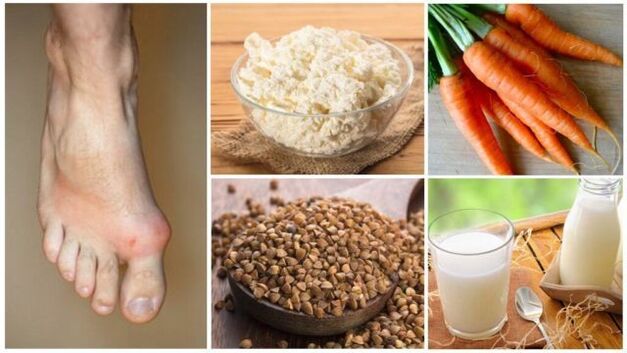
Incorrect nutrition combined with impaired nutrient absorption leads to the progression of gout. This disease develops when the degree of uric acid in the blood exceeds the permissible limits (for men above 420 μmol / l, for women - 350 μmol / l). Disruption of metabolic processes causes the salts of this acid to settle on the intestinal walls, blood vessels, joint surfaces and damage important organs of human life.
Over time, the disease becomes chronic with frequent relapses. In the acute period, patients experience unbearable pain in the area of localization of the pathological process. A diet for gout helps normalize uric acid levels and reduce recurrence cases.
Why diet for gout?
An important task of therapeutic measures is to reduce the nature and frequency of symptoms of the disease. This can be achieved by reducing the uric acid content in the body.
The development of gout attacks is due to:
- consuming food high in purine substances;
- metabolic disorder.
Optimization of the diet allows you to begin the correct processes of assimilation and excretion of substances. Therapeutic measures aimed at eliminating the causes of the development of the disease are closely related to compliance with the restrictions of some food addictions. You can slow the progression of the disease with the help of a properly formed diet menu.
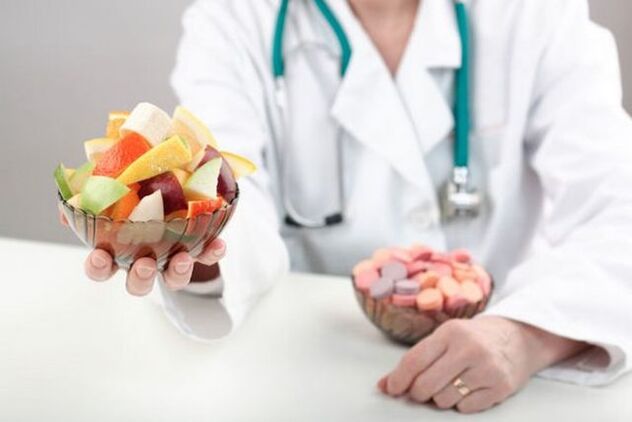
Foods that make up a person's daily diet should include foods containing a large amount of substances beneficial to the body.
Nutritional therapy for gout aims to reduce symptomatic symptoms by eliminating the food components that trigger them. The products that man eats every day have a tremendous effect on his overall health and are responsible for the chemical processes that occur in the human body throughout his life.
What should not be eaten with gout?
Based on research, scientists have identified a list of products that directly trigger the primary development and further progression of the disease.
The list of what you should not eat for gout includes:
- smoked spicy cheese and cheese product;
- meat and bone products rich in cholesterol (young animal and pork, hoof, buldyzhki);
- meat and bone oils, ear;
- high-fat fish (sardines, anchovies);
- pickled vegetables, pickled fruits (cabbage, watermelon, cucumber, apple);
- hot, cold smoked products;
- legumes (peas, beans, soybeans, lentils);
- greens containing oxalic acid (spinach leaves, sorrel, rhubarb root);
- hot spices, sauces;
- some varieties of vegetable crops (Brussels sprouts and cauliflower, radish);
- internal organs of animals (kidneys, liver, lungs, heart, brains) obtained during the cutting of carcasses;
- oat groats;
- products using confectionery oil;
- any percentage alcohol;
- fruits and berries (grapes, raspberries, figs);
- hot, spicy and ethereal spices (bay leaf, horseradish, hot pepper);
- fat and oil products of animal origin (lard, margarine, lard);
- canned meat, fish and vegetable products.
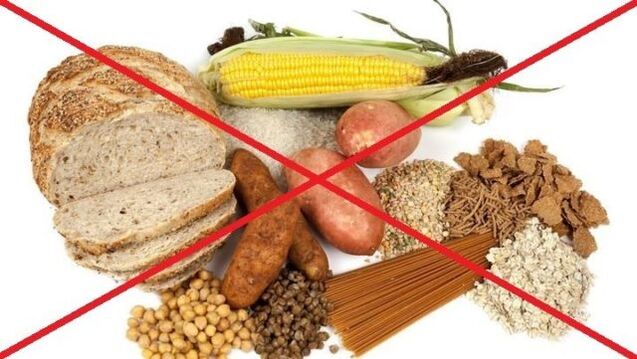
A person's metabolism may be impaired if the diet is not balanced or contains large amounts of fatty, spicy, or heavy meals for the digestive system.
List of products recommended to be restricted:
- coffee, strong tea;
- Butter;
- Plum;
- eggplant vegetables (eggplant, tomato, pepper);
- table salt, granulated sugar;
- fungi (only during remission).
To alleviate an attack and maintain a state of remission, it is important to remove the above foods from the diet for a long time.
What can you eat with gout?
List of foods recommended for use by patients with this disease:
- dietary meat products (rabbit, poultry, lean beef);
- lean white fish (pike, pike, cod, pollock);
- bran and rye bread;
- chicken egg (except yolk);
- cereals (rice, wheat, buckwheat, millet, pearl barley);
- fresh vegetables (beets, carrots, cucumbers, cabbage, potatoes);
- seasonal fruits, fruits (watermelon, melon, apricot, strawberry, peach, cherry, blackberry, green apple);
- pasta;
- hazelnut kernels (hazelnut, walnut, cedar);
- herbal teas and decoctions (Dubrovnik, basil, catnip);
- fermented dairy products, cottage cheese;
- freshly squeezed juices, fruit drinks, compotes;
- cooked tomatoes;
- spices (turmeric, fennel, basil);
- vegetable oil (olive, rapeseed).
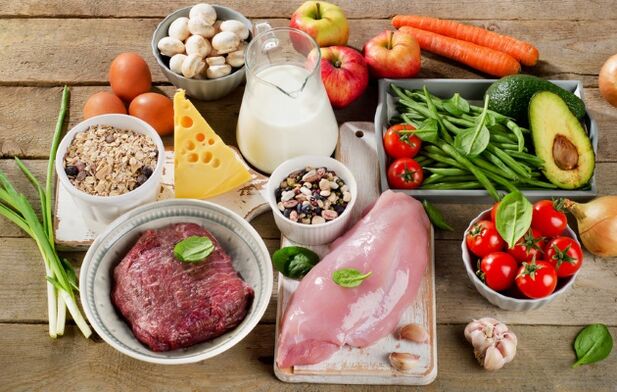
Nutritional therapy for gout will help the patient quickly recover from unpleasant and painful symptoms at home.
In limited quantities, natural honey is beneficial for gout. This product is suitable as a sugar substitute.
Honey has many beneficial properties:
- immunostimulating;
- antioxidant;
- improvement of metabolic processes;
- bactericidal.
In the acute period, you should not abuse this beekeeping product. Patients with this disease should eat foods rich in vitamins, trace elements and amino acids. A useful supplement is pharmaceutical fish oil for gout.
General food rules
Removing some prohibited foods from your usual menu doesn't guarantee instant relief. In addition, the list of products varies depending on the stage and severity of the disease. Thus, feeding for gout during a flare involves adhering to stricter restrictions than during remission.
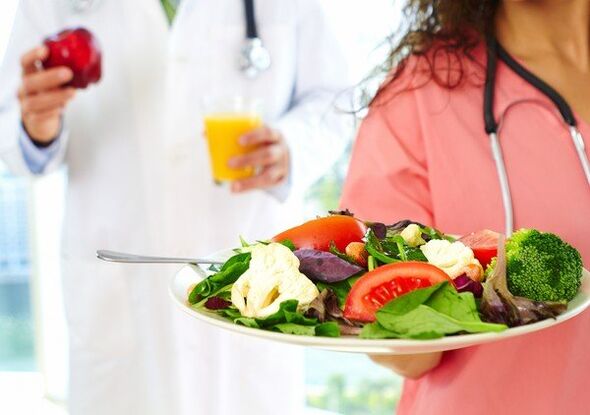
There is a common set of rules for patients with this condition that is important to follow in diet therapy:
- Eat food at short intervals (5-6 times) several times a day in small portions. Hunger causes an increase in acetone in the urine. And this can worsen the course of the disease.
- Chew the food thoroughly, do not overeat.
- Limit the amount of table salt used in the preparation of meals (up to 5 grams per day). Salt has the ability to retain fluid in tissues, which requires the accumulation of uric acid salts.
- Optimize body fluid balance. To do this, it is recommended to drink at least 2 liters a day.
- Arrange the fasting days. Preferably vegetables, dairy products and fruit (excluding those whose consumption is prohibited).
- Stick to restrictions for a long time, as short-term use of the therapeutic diet is ineffective.
People suffering from severe metabolic disorders and with a history of diabetes and gout should exclude dishes that cause jumps in uric acid and insulin levels in the blood. The gout and diabetes diet is designed to reduce these indicators to prevent the development of exacerbations and complications.
How is food prepared properly?
Restricting the grocery list is not the only item to watch out for. When preparing your meals, it is important to choose the right cooking method.
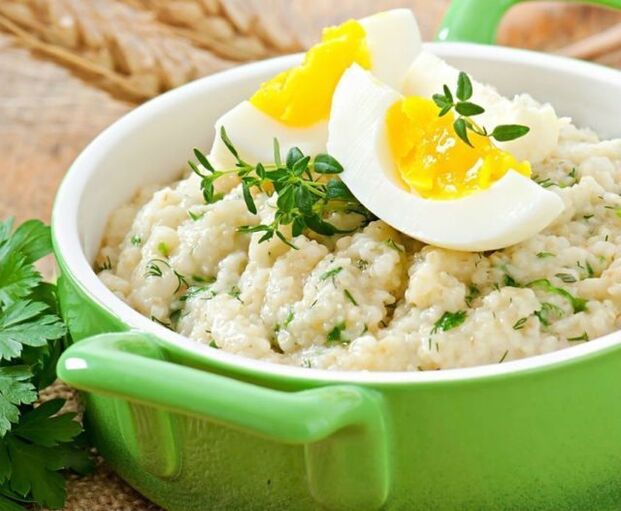
There are no special requirements for the preparation of products, except for meat processing.
Cooking is allowed in the following ways:
- for a couple;
- Cooking;
- extinguishing;
- boil;
- weakness.
Cooking is contraindicated in:
- frying;
- to smoke;
- salting and pickling;
- fermentation.
Do not use stale, burnt food. The temperature regime of the food consumed should be optimal for food and should not exceed 40 degrees Celsius. Food should not be hard and hard. If necessary, individual dishes can be chopped using a blender.
Effective diet: menu for every day
Medical nutrition should be suitable for the physiological needs of patients in terms of content of important components (protein-carbohydrate-fat balance), calories, vitamins, microelements, amino acids.
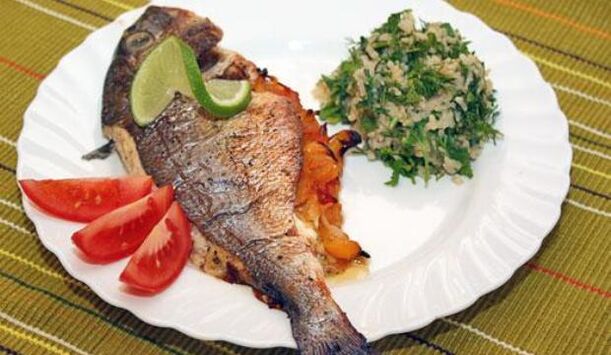
Approximate diet for gout and high uric acid:
1 day
First breakfast: boiled cod, mashed potatoes, black bread, white cabbage salad, sour cream, weak coffee with a cup of saccharin.
Second breakfast: cottage cheese casserole, boiled egg, whole wheat bread, tea drink.
For lunch: vegetarian soup with fried roots and potatoes, beef stew, buckwheat porridge, fresh cucumber, 1 apple.
Dinner: carrot cutlets, pasta, milk, biscuit biscuits.
Night: 200 ml of kefir.
2 days
First breakfast: boiled white cabbage, 1 boiled egg, black bread, cappuccino.
Second breakfast: cappuccino, biscuit biscuits.
For lunch: lean beetroot soup, whole wheat bread, baked poultry fillet, boiled rice, fruit jelly.
For dinner: boiled potatoes with vegetables, vegetable casserole, whole wheat bread with butter, a glass of broth.
Night: 250 ml of whey.

3 days
First breakfast: vegetable salad (white cabbage, carrot, apple), weak coffee.
Second breakfast: cottage cheese with sour cream, rosehip broth.
For lunch: barley soup with sour cream, steamed cutlets, mashed potatoes, fruit jelly, whole grain bread.
For dinner: Carrot cutlets with fruit, semolina casserole, a glass of milk.
Before going to bed: steamed prunes.
4 days
First breakfast: grated carrots with sour cream, wheat porridge, a glass of green tea.
Second breakfast: cutlet with dried fruit, compote, biscuit biscuit.
For lunch: Milk noodles, boiled chicken with zucchini and potatoes, fruit jelly, black bread.
For dinner: baked cheesecake, carrot and apple cutlets, a glass of lemon tea.
At night: 200 ml of warm milk.
5 days
First breakfast: Porridge cooked in buckwheat milk, green tea.
Second breakfast: a glass of fresh carrots.
For lunch: vegetable rice soup with sour cream, boiled beef, beetroot caviar, basil infusion with honey, black bread.
For dinner: pumpkin stew with sour cream, a glass of weak tea, crackers.
Before going to bed: rosehips are infused with honey.
6 days
First breakfast: chicken protein omelet, boiled beets, white bread, a glass of weak coffee.
Second breakfast: pumpkin casserole, fruit and berry compote.
Lunch: vegetarian barley soup, boiled potatoes, boiled meatballs, jelly, black bread.
Dinner: Rice boiled in milk, a light tea drink.
Before going to bed: a glass of yogurt.
The standard diet is prepared by a doctor. The combination options for diet-permitted meals are varied. Diet number 6 is common for gout. Its main principle is the exclusion of foods and dishes with a high purine ingredient, the addition of alkaline beverages to the diet, and gentle processing during cooking. An independently compiled menu with restrictions on the quantity and nature of food can lead to a prolonged course of the disease.















































































